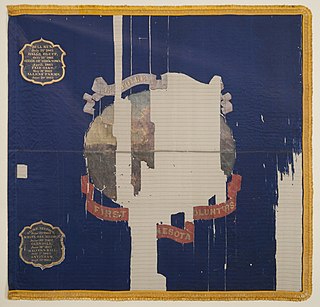
The 1st Minnesota Infantry Regiment was a Union infantry regiment active during the American Civil War. The 1st Minnesota participated in the battles of First Bull Run, Antietam and the Battle of Gettysburg. The regiment's most famous action occurred on the second day of the Battle of Gettysburg when Major General Winfield Scott Hancock ordered the 1st Minnesota to charge into a brigade of 1200 Confederate soldiers. This action blunted the Confederate attack and helped preserve the Union's precarious position on Cemetery Ridge.

The 5th New York Infantry Regiment, also known as Duryée's Zouaves, was a volunteer infantry regiment that served in the U.S. Army during the American Civil War. Modeled, like other Union and Confederate infantry regiments, on the French Zouaves of Crimean War fame, its tactics and uniforms were different from those of the standard infantry.
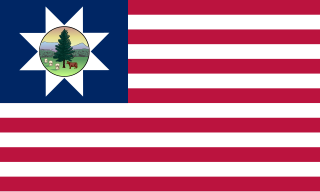
The 2nd Vermont Infantry Regiment was a three years' infantry regiment in the Union Army during the American Civil War. It served in the eastern theater, predominantly in the VI Corps, Army of the Potomac, from June 1861 to July 1865. It was a member of the famous Vermont Brigade.

The 10th Maine Infantry Regiment was mustered in for two years of service at Portland, Maine, on October 4, 1861, by then-Major Seth Eastman. It was mustered out on May 8, 1863, also at Portland. The regimental commander was Colonel George Lafayette Beal. The 10th Maine was a re-organization of the 1st Maine Infantry, a regiment primarily composed of men with two-year enlistments that was mustering out after completing three months of Federal service. Eight companies of the 1st Maine were retained in service, with Companies A and D replaced by newly recruited companies.

The 3rd Maine Infantry Regiment was mustered in at Augusta, Maine, for three years' service on June 4, 1861, and were mustered out on June 28, 1864. Veterans who had re-enlisted and those recruits still liable to serve were transferred to 17th Maine Volunteer Infantry Regiment.
The First New Jersey Brigade is the common name for an American Civil War brigade of New Jersey infantry regiments in the Union Army of the Potomac. Its official designation through most of its service was as the 1st Brigade, 1st Division, VI Corps.

The 2nd Wisconsin Infantry Regiment was an infantry regiment that served in the Union Army during the American Civil War. It spent most of the war as a member of the famous Iron Brigade of the Army of the Potomac. It suffered the largest number of casualties as a percentage of its total enlistment of any Union Army unit in the war.

The 5th Michigan Infantry Regiment was an infantry regiment from Michigan that served in the Union Army during the American Civil War. The regiment was mustered into federal service in August 1861 and served in the Eastern Theater. It fought in all the major battles of the Army of the Potomac, including Seven Pines, the Seven Days Battles, Second Bull Run, Chantilly, Antietam, Fredericksburg, Chancellorsville, Gettysburg, the Wilderness, Spotsylvania, Cold Harbor, Petersburg, and Appomattox. The regiment was mustered out in June 1865.

The 12th Maine Infantry Regiment was an infantry regiment that served in the Union Army during the American Civil War.
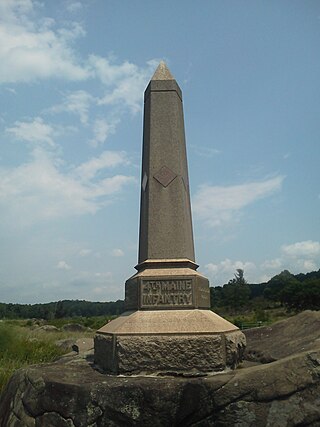
The 4th Maine Infantry Regiment was assembled in Rockland, Maine, on By May 20, 1861, with Colonel Hiram G. Berry as its commanding officer. He received four Knox County companies, one from Searsport, Winterport, Wiscasset, and Damariscotta, and two from Belfast. In all, 1,085 men, including a regimental band, were mustered. The regiment was mustered out of service July 19, 1864, with the expiration of their term. The veteran volunteers and recruits were transferred to 19th Maine Infantry. Of the 1440 men that served in the regiment during the war 170 men were killed in action or died of wounds received in battle. An additional 443 were wounded, 137 men perished of disease, and 40 men expired in Confederate prisons.
The 5th Maine Infantry Regiment was an infantry regiment of the Union Army during the American Civil War.
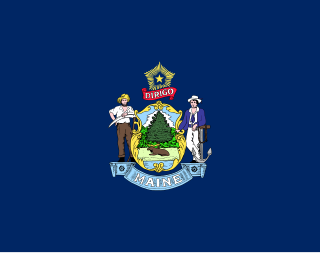
The 1st Maine Heavy Artillery Regiment was a regiment in the Union Army during the American Civil War. It suffered more casualties in an ill-fated charge during the Second Battle of Petersburg than any Union regiment lost in a single day of combat throughout the war. It was also the Union regiment with the highest number of officers killed (23).
The Thirteenth Pennsylvania Reserve Regiment, also known as the 42nd Pennsylvania Volunteer Infantry, the 1st Pennsylvania Rifles, Kane's Rifles, or simply the "Bucktails," was a volunteer infantry regiment that served in the Union Army during the American Civil War. It was a part of the famed Pennsylvania Reserve division in the Army of the Potomac for much of the early and middle parts of the war, and served in the Eastern Theater in a number of important battles, including Antietam, Fredericksburg, and Gettysburg.
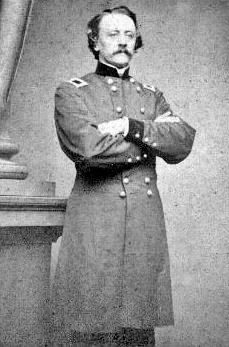
Charles Davis Jameson was an American Civil War general and Democratic Party candidate for Governor of Maine. He contracted "camp fever" (typhoid) at the Battle of Fair Oaks, returned to his native state of Maine, dying in transit or soon after.
George Varney (1834–1911) was a colonel in the Union Army during the American Civil War and was awarded the grade of brevet brigadier general, United States Volunteers, in 1867 for his gallant service at the Battle of Fredericksburg on December 13, 1862. Born in Levant, Maine, he was a wholesale grocer in Bangor, Maine when the war broke out in 1861.
Charles Wentworth Roberts (1828–1898) was a colonel in the Union Army during the American Civil War, who was awarded the rank of brevet brigadier general, United States Volunteers, in 1866, to rank from March 13, 1865. He was born in Old Town, Maine, and graduated from Bowdoin College, but lived most of his life in nearby Bangor, Maine. He was the son of prominent local lumber merchant Amos M. Roberts. His father was the wealthiest man in Bangor according to the 1840 census. Roberts enlisted as lieutenant colonel of the 2nd Maine Volunteer Infantry Regiment in 1861, the first unit to leave Maine in response to President Abraham Lincoln's call for volunteers to suppress the rebellion after the fall of Fort Sumter. With the promotion of the regiment's colonel Charles Davis Jameson, USV, to brigadier general, Roberts became colonel of the regiment. Roberts had a horse shot out from under him at the Second Battle of Bull Run, when he commanded the 1st Brigade while General John H. Martindale suffered from typhoid fever. Roberts retired due to ill health in 1863 and was succeeded on January 10, 1863, by Colonel George Varney. Then Lieutenant Colonel Varney had led the regiment at the Battle of Fredericksburg on December 13, 1862, where he received a head wound from a shell fragment. President Andrew Johnson nominated Colonel Roberts for the award of the grade of brevet brigadier general, United States Volunteers, on February 24, 1866, and the brevet was confirmed by the U. S. Senate on April 10, 1866, to rank from March 13, 1865.

The 1st Virginia Infantry Regiment was an infantry regiment raised in the Commonwealth of Virginia for service in the Confederate States Army during the American Civil War. It fought mostly with the Army of Northern Virginia.
Hispanics in the American Civil War fought on both the Union and Confederate sides of the conflict. Not all the Hispanics who fought in the American Civil War were "Hispanic Americans" — in other words citizens of the United States. Many of them were Spanish subjects or nationals from countries in the Caribbean, Central and South America. Some were born in what later became a U.S. territory and therefore did not have the right to U.S. citizenship. It is estimated that approximately 3,500 Hispanics, mostly Mexican-Americans, Puerto Ricans and Cubans living in the United States joined the war: 2,500 for the Confederacy and 1,000 for the Union. This number increased to 10,000 by the end of the war.
The 154th Regiment, Tennessee Infantry was an infantry regiment from Tennessee that served with the Confederate States Army in the American Civil War. Raised originally in 1842 as the 154th Tennessee Militia it sought to retain its number and was as such also known as 154th (Senior) Tennessee Infantry . Consolidating with the 13th Tennessee Infantry Regiment in March 1863 it was known as 13th-154th Tennessee Infantry Regiment; and had a number of temporary field consolidations until it was finally merged into the 2nd Consolidated Tennessee Infantry on April 9, 1865. The regiment surrendered with the remnants of the Army of Tennessee at Bennett Place on April 26, 1865.
The 51st Pennsylvania Volunteer Infantry was an infantry regiment that served in the Union Army during the American Civil War.














